Confuciusornis sanctus, C. dui, C. feducciai, C. jianchangensis
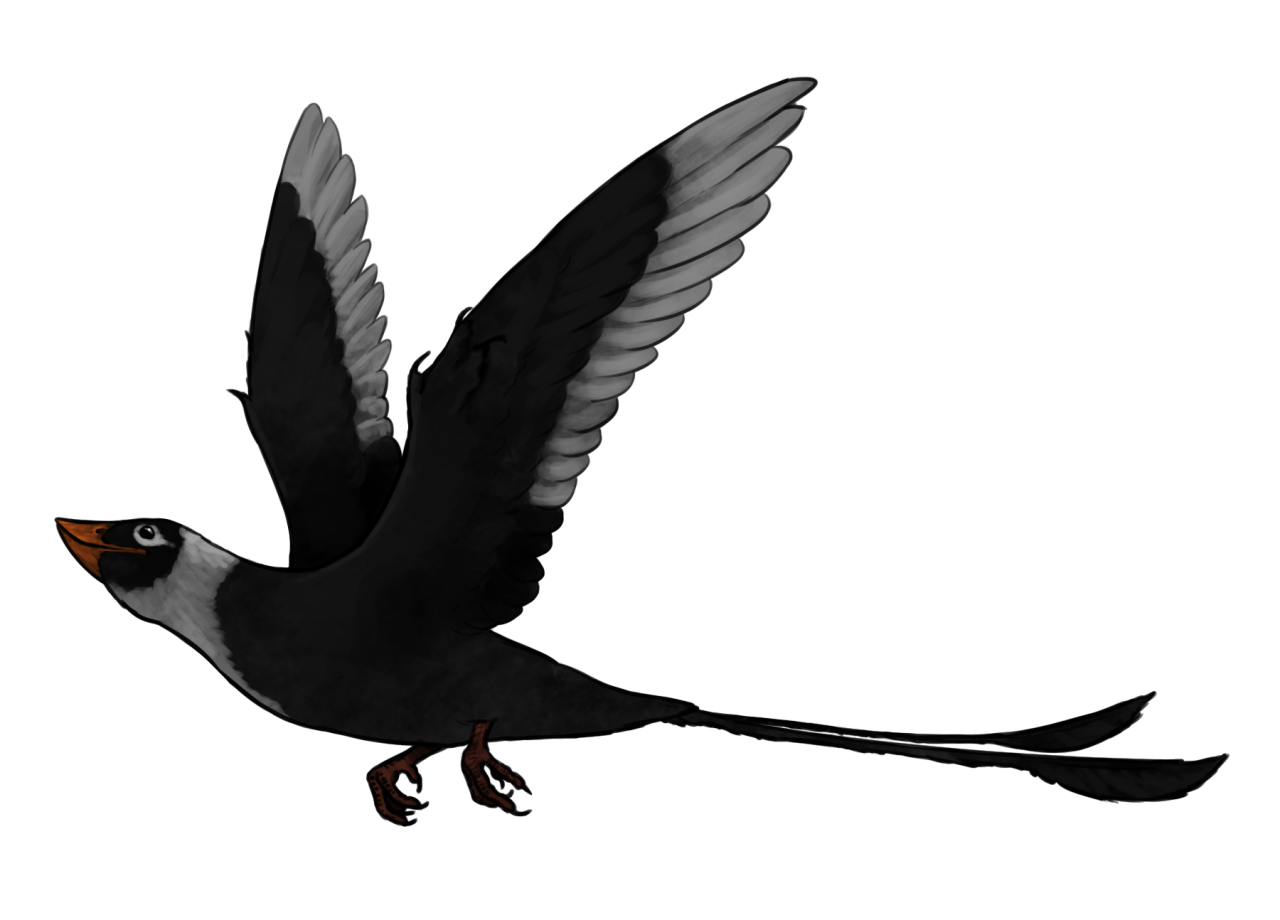
By Jack Wood on @thewoodparable
Name: Confuciusornis sanctus, C. dui, C. feducciai, C. jianchangensis
Name Meaning: Confucius Bird
First Described: 1995
Described By: Hou et al.
Classification: Dinosauria, Saurischia, Eusaurischia, Theropoda, Neotheropoda, Averostra, Tetanurae, Orionides, Avetheropoda, Coelurosauria, Tyrannoraptora, Maniraptoriformes, Maniraptora, Pennaraptora, Paraves, Eumaniraptora, Averaptora, Avialae, Euavialae, Avebrevicauda, Pygostylia, Confiusornithiformes, Confuciusornithidae
My Fourth Favorite Extinct Avialan
Confuciusornis is a small dinosaur known from the Yixian and Jiufotang Formations in China, dating back to about 125 to 120 million years ago, in the Aptian age of the Early Cretaceous. Given that it is a traditional “bird” genus (ie, in Avialae), it actually has multiple species assigned to the genus - and they’re not necessarily monophyletic (ie, other genera in the family are more closely related to some species than others). Still, it’s a group of dinosaurs decidedly worth talking about. Also, since it is a traditional “bird”, Feduccia has not only written extensively about it, but one of the species is even named for him. But still, it’s an interesting, small little dinosaur, and one that is vastly important for our understanding of the evolution of modern birds.

By Matt Martyniuk, CC BY-SA 3.0
Confuciusornis is known from hundreds of specimens and is a very common fossil in the regions where it’s been found; meaning we know a lot about the animal - and still, there are some things about it that we do not know. It was about the size of a modern pigeon, about 50 cm long and with a wingspan of 70 cm. It would have weighed between 1.5 kg and 0.2 kg, depending on the individual and the species. C. feducciai in particular is larger than C. sanctus. It had a pygostyle, a trademark of later derived Avialans, which is essentially when the final tail vertebrae are fused together into a single structure which can support tail feathers and complex musculature, typically used for flight or display. Pygostyles evolved at least twice: in Oviraptorosaurs, and in Pygostalians, a lineage of Avialans that includes modern birds, of which Confuciusornis is an early derived member.
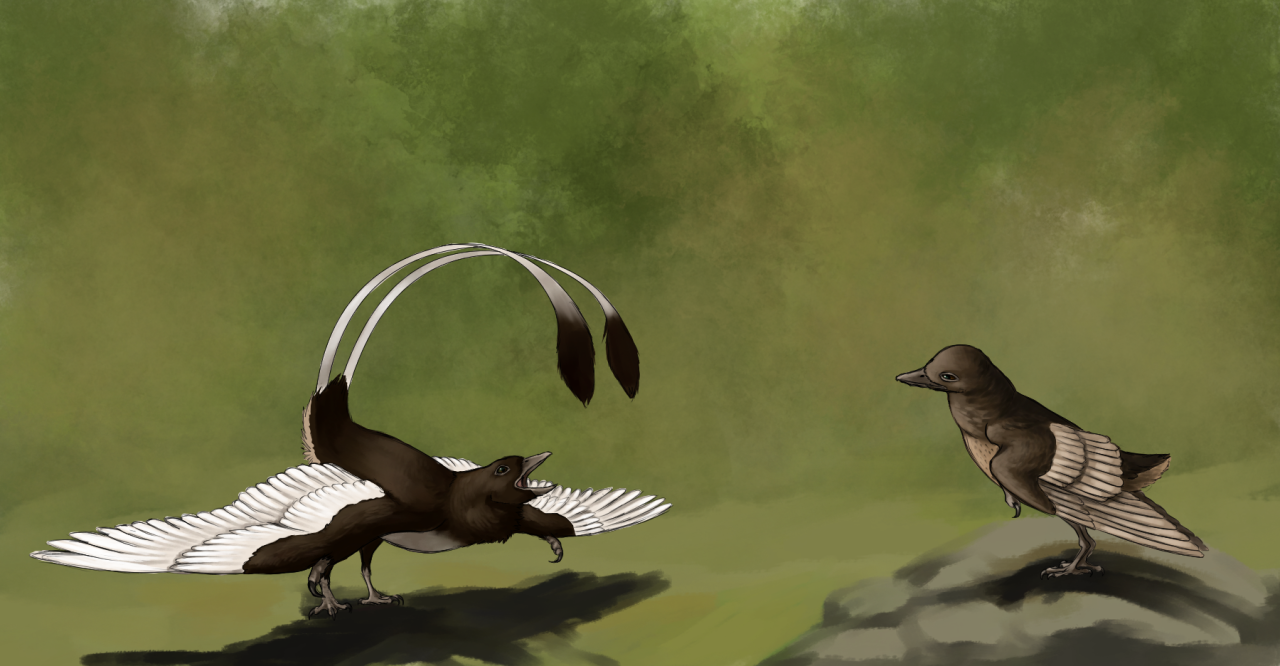
By Medena Darkorus on www.medenadragon.deviantart.com
Though it has a bony sternum, it is fairly unlikely that Confuciusornis was able to power its own flight. Though it had many adaptations for flight including a fused wrist and short tail, its wings were limited in their ability to lift, its wings were equipped with feathers that may have been too weak to support flapping flight, and its breast musculature was not well developed enough. However, this is still a fairly controversial position; given the large number of specimens of this animal and the fact that they are found buried together in large groups, it has been proposed that it was a flying animal, and the large groups found are more characteristic of flying flocks than of gliding animals. Still, there is no strong evidence for flight capability in Confuciusornis, and only gliding capability at this time.
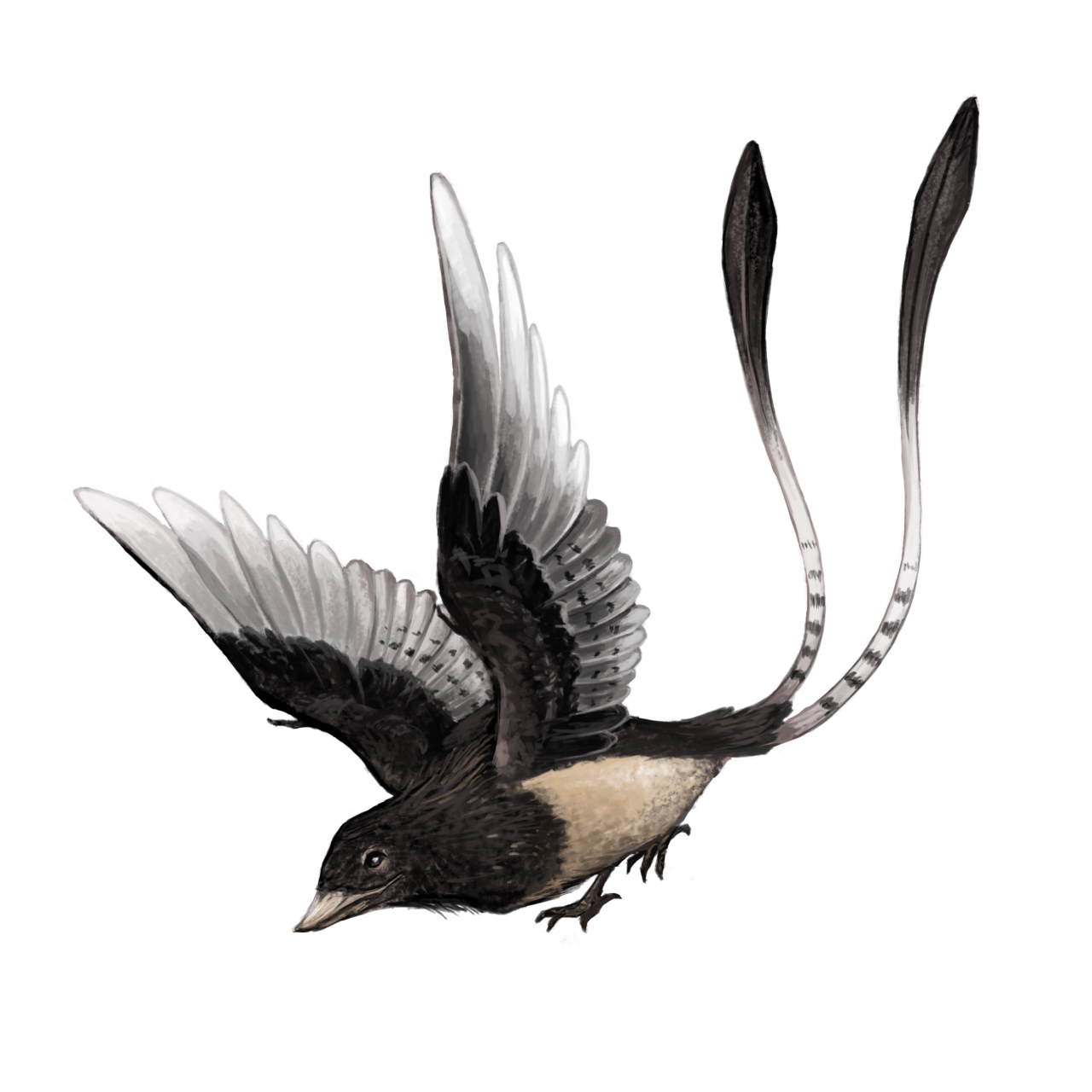
By Franz Anthony on @franzanth
The genus was sexually dimorphic, with shorter tailed specimens being confirmed as female by the presence of medullary bone in the fossils - ie, a certain type of bone found in birds and other dinosaurs that develops only when an animal is producing eggs. This indicates that the longer tailed specimens were probably males, though of course various intersex and other types of genetic difference would have affected this strict dimorphism. The long tales may have been used for display during mating, like many elaborate feathers found on modern dinosaurs. Confuciusornis had a high metabolism, close to if not identical to the metabolism of modern birds, reaching maximum size between 13 and 20 weeks after hatching. As for its other feathers, it had a very long and narrow wing shape, unlike that of modern birds.
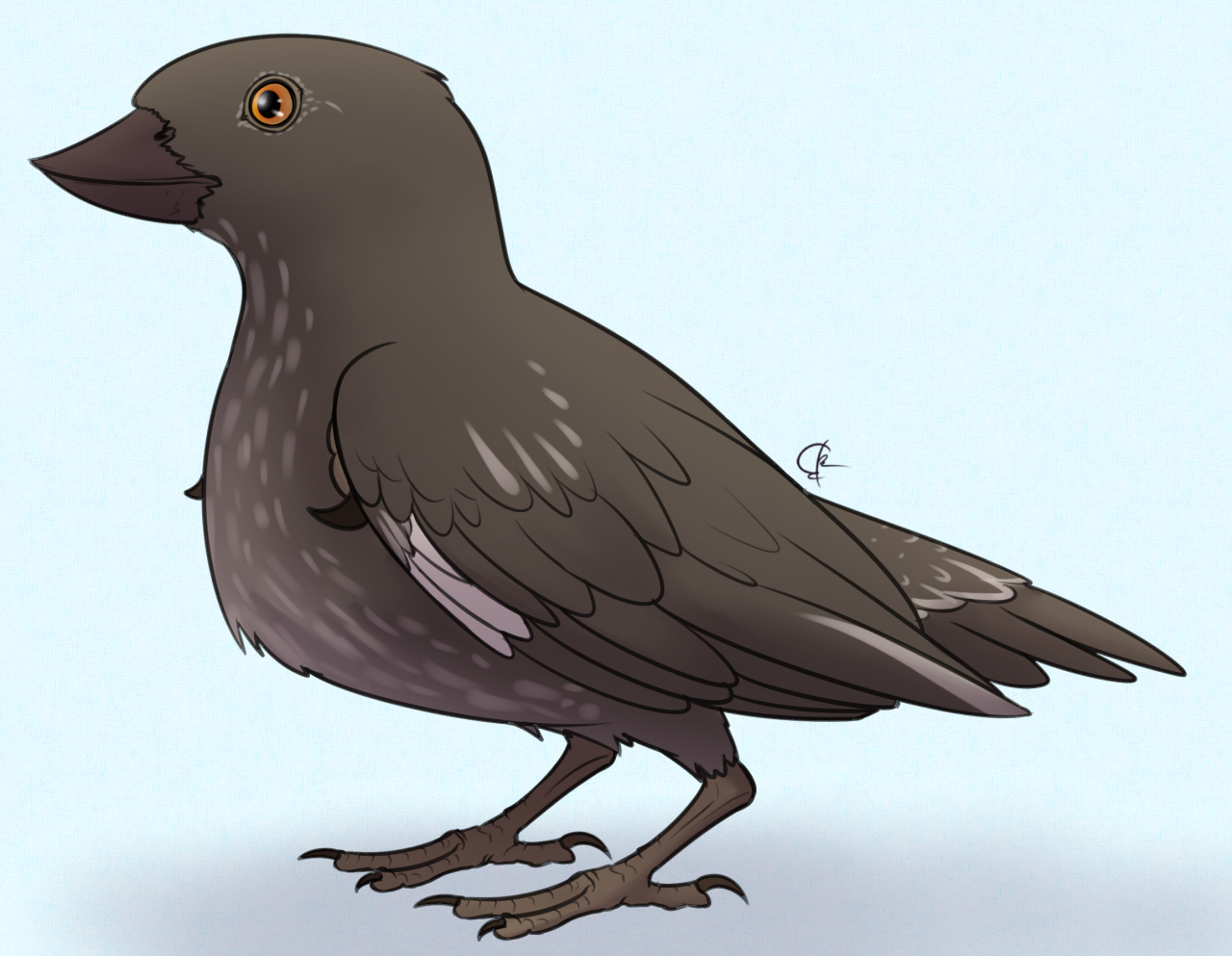
By José Carlos Cortés on @ryuukibart
Confuciusornis was potentially an omnivore like modern crows, and it had a pointed, toothless beak that was relatively heavy built and immobile. The exact diet of Confuciusornis, however, has long been under debate and scrutiny. No gastroliths have been found associated with the genus, indicating that it probably did not feed exclusively on plant matter. It is possible that it fed on fish, given the association of fossil fish bones found in a cluster where the crop would be found in modern birds. It also may have eaten insects and other small prey in its forest habitat. Coloration has been determined from melanosomes and metals in the feathers, determining that it had darkly colored body and upper wing feathers, and the other wing feathers were potentially white.
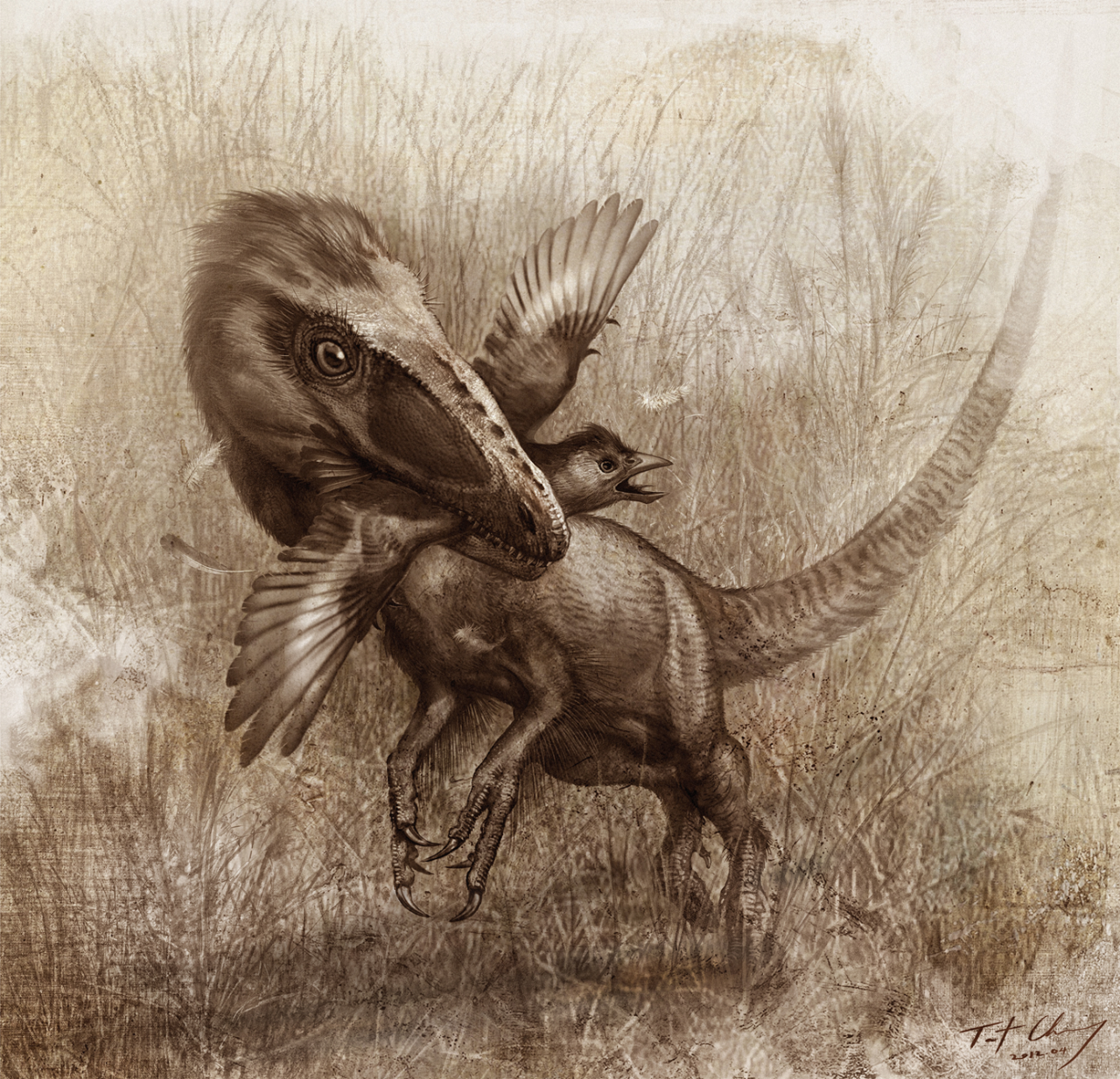
By Xing L, Bell PR, Persons WS IV, Ji S, and Miyashita T et al., CC BY-SA 2.5
Confuciusornis lived in some of the most complex and well feathered ecosystems of the Early Cretaceous, alongside many other dinosaurs. As shown in the above image, it was probably preyed upon by some of them, such as Sinocalliopteryx. In the Yixian, Confuciusornis lived alongside Bolong, Jeholosaurus, Jinzhousaurus, Liaoceratops, Liaoningosaurus, Psittacosaurus, Archaeorhynchus, Bohaiornis, Changchengornis, Eoenantiornis, Dalingheornis, Jinzhouornis, Jixiangornis, Hongshanornis, Liaoningornis, Liaoxiornis, Lingyuanornis, Longicrusavis, Longirostravis, Shanweiniao, Zhongornis, Graciliraptor, Mei, Sinornithosaurus, Sinovenator, Sinusonasus, Tianyuraptor, Zhenyuanlong, Beipiaosaurus, Caudipteryx, Dilong, Hexing, Huaxiagnathus, Incisivosaurus, Ningyuansaurus, Protarchaeopteryx, Shenzhousaurus, Similcaudipteryx, Sinocalliopteryx, Sinosauropteryx, Yixianosaurus, Yutyrannus, Dongbeititan, and many pterosaurs, indicating a vibrant community for flying and gliding animals. In the Jiufotang, Confuciusornis lived alongside dinosaurs such as Chuanqilong, Psittacosaurus, Alethoalaornis, Boluochia, Cathayornis, Cuspirostrisornis, Dapingfangornis, Eocathayornis, Graciliornis, huoshanornis, Largirostornis, Longchengornis, Longipteryx, Rapaxavis, Sirnornis, Xiangornis, Chaoyangia, Jianchangornis, Parahongshanornis, Schizooura, Songlingornis, Yanornis, Yixianornis, Dalianraptor, Jeholornis, Microraptor, Omnivoropteryx, Sapeornis, Shenshiornis, Similicaudipteryx, Sinotyrannus, and Zhongjianornis. Despite all this competition from other gliding animals, the extreme abundance of Confuciusornis indicates that it was a staple in thse communities.
Source:
https://en.wikipedia.org/wiki/Confuciusornis
Shout out goes to @danripper93!










